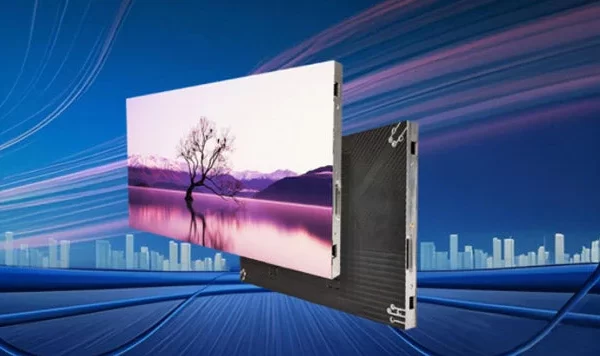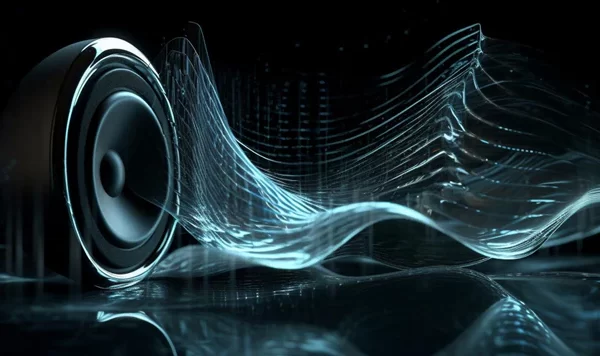
Entering the world of photography or upgrading your equipment can feel like a daunting task, especially when it comes to choosing between mirrorless cameras and DSLRs. Both types of cameras have earned their place in the photography world, each offering unique advantages tailored to different styles of shooting. The decision ultimately hinges on your specific needs—whether you’re a seasoned professional seeking advanced features or an enthusiastic beginner looking for user-friendly options. Understanding the key differences between mirrorless and DSLR cameras is crucial in making an informed choice that aligns with your goals. In this guide, we’ll delve into the pros and cons of both camera types, helping you find the perfect fit for your photography journey. Let’s break it down and explore what each has to offer.
What is a Mirrorless Camera?
A mirrorless camera, true to its name, does away with the traditional mirror mechanism found in DSLRs, offering a more compact design and quicker performance. Instead, it relies on an electronic viewfinder (EVF) or an LCD screen to display the image. These cameras tend to be smaller, lighter, and more advanced in terms of technology, making them a preferred choice for modern photographers. With faster autofocus, improved video capabilities, and enhanced burst shooting speeds, mirrorless cameras are quickly becoming the go-to option for those who value versatility and portability in their gear.
Checkout – Second Hand Cameras & Lenses on OLX
What is a DSLR Camera?
A Digital Single-Lens Reflex (DSLR) camera uses a mirror to reflect light into an optical viewfinder. When you press the shutter, the mirror flips up, allowing light to reach the sensor and capture the image. Known for their exceptional image quality, versatility with interchangeable lenses, and robust build, DSLRs are favored by many photographers for their reliable performance. Additionally, they offer longer battery life, making them ideal for extended shooting sessions, and their optical viewfinder provides a more natural, real-time view of the scene.
Features Comparison: Mirrorless vs. DSLR
| Feature | Mirrorless Cameras | DSLR Cameras |
| Size & Weight | Compact and lightweight | Bulkier and heavier |
| Autofocus | Faster, especially for video | Slower in live view mode |
| Battery Life | Shorter due to electronic viewfinder | Longer battery life |
| Viewfinder | Electronic Viewfinder (EVF) | Optical Viewfinder (OVF) |
| Lens Availability | Fewer options, but growing | Wide range of lenses |
| Video Performance | Superior video quality with better autofocus | Decent video, but weaker autofocus |
| Price Range | Varies, with affordable and high-end options | More options across different budgets |
Top Mirrorless Cameras:
1. Sony A7 IV

The Sony A7 IV is a high-resolution full-frame mirrorless camera that offers a blend of advanced features suitable for both photography and videography.
Key Features and Specifications:
- Sensor: 35 mm full-frame Exmor R CMOS sensor with approximately 33.0 megapixels effective resolution.
- Processor: BIONZ XR image processor for enhanced processing speed and image quality.
- Autofocus: Advanced autofocus system with 759 phase-detection points and Real-time Eye autofocus for humans and animals.
- Continuous Shooting: Up to 10 frames per second (fps) with the electronic shutter.
- Video Capabilities: 4K video recording at up to 60p with 10-bit 4:2:2 color depth.
- Viewfinder: 3.68-million-dot OLED electronic viewfinder.
- Display: 3-inch tilting LCD screen with 1.03 million dots.
- Connectivity: Wi-Fi, Bluetooth, and USB 3.2 for seamless file transfer.
- Battery Life: Approximately 610 shots per charge (CIPA standard).
2. Canon EOS R6
The Canon EOS R6 is a versatile full-frame mirrorless camera designed for both photographers and videographers, offering high-speed performance and excellent low-light capabilities.
Key Features and Specifications:
- Sensor: Full-frame CMOS sensor with approximately 20.1 megapixels effective resolution.
- Processor: DIGIC X image processor for fast performance and high-quality images.
- Autofocus: Dual Pixel CMOS AF II with 1,053 AF points and Eye Detection AF.
- Continuous Shooting: Up to 20 fps with the electronic shutter and 12 fps with the mechanical shutter.
- Video Capabilities: 4K UHD video recording at up to 60p and Full HD at up to 120p.
- Viewfinder: 3.69-million-dot OLED electronic viewfinder.
- Display: 3-inch vari-angle LCD screen with 1.62 million dots.
- Connectivity: Wi-Fi, Bluetooth, and USB 3.2 for easy sharing and remote control.
- Battery Life: Approximately 380 shots per charge (CIPA standard).
3. Nikon Z6 II

The Nikon Z6 II is a full-frame mirrorless camera that combines high-resolution imaging with robust video features, catering to both professionals and enthusiasts.
Key Features and Specifications:
- Sensor: Full-frame CMOS sensor with 24.5 megapixels effective resolution.
- Processor: Dual EXPEED 6 image processors for improved performance and speed.
- Autofocus: 273-point hybrid AF system with Eye-Detection and Animal-Detection AF.
- Continuous Shooting: Up to 14 fps with AE/AF tracking and buffer up to approximately 124 shots.
- Video Capabilities: 4K UHD video recording at up to 60p and Full HD at up to 120p.
- Viewfinder: 3.69-million-dot OLED electronic viewfinder.
- Display: 3.2-inch tilting LCD screen with 2.1 million dots.
- Connectivity: Wi-Fi, Bluetooth, and dual memory card slots supporting CFexpress and UHS-II SD cards.
- Battery Life: Approximately 410 shots per charge (CIPA standard).
Top DSLR Cameras:
1. Nikon D850

The Nikon D850 is a high-resolution DSLR that combines exceptional image quality with robust performance, making it suitable for both professional photographers and enthusiasts.
Key Features and Specifications:
- Sensor: 45.7-megapixel full-frame CMOS sensor.
- Processor: Dual EXPEED 5 image processors for enhanced performance.
- Autofocus: 153-point AF system with 99 cross-type sensors.
- Continuous Shooting: Up to 7 frames per second (fps) with the mechanical shutter; up to 9 fps with the optional battery grip.
- Video Capabilities: 4K UHD video recording at up to 30p and Full HD at up to 120p.
- Viewfinder: Optical pentaprism viewfinder with 100% frame coverage.
- Display: 3.2-inch tilting LCD screen with 2.36 million dots.
- Connectivity: Wi-Fi, Bluetooth, and USB 3.0 for seamless file transfer.
- Battery Life: Approximately 1,840 shots per charge (CIPA standard).
2. Canon EOS 90D
The Canon EOS 90D is a versatile DSLR that offers high-resolution imaging and advanced features, catering to both photography and videography needs.
Key Features and Specifications:
- Sensor: 32.3-megapixel APS-C CMOS sensor.
- Processor: DIGIC 8 image processor for fast performance.
- Autofocus: 45-point, all-cross-type AF system with dual-pixel CMOS AF for live viewing and video.
- Continuous Shooting: Up to 10 fps with the mechanical shutter.
- Video Capabilities: 4K UHD video recording at up to 30p and Full HD at up to 120p.
- Viewfinder: Optical pentaprism viewfinder with 100% frame coverage.
- Display: 3-inch vari-angle LCD screen with 1.04 million dots.
- Connectivity: Wi-Fi, Bluetooth, and USB 2.0 for easy sharing and remote control.
- Battery Life: Approximately 1,300 shots per charge (CIPA standard).
3. Canon EOS 5D Mark IV

The Canon EOS 5D Mark IV is a professional-grade DSLR known for its superior image quality and video performance, making it a reliable choice for serious photographers.
Key Features and Specifications:
- Sensor: 30.4-megapixel full-frame CMOS sensor.
- Processor: DIGIC 6+ image processor for high-speed performance.
- Autofocus: 61-point AF system with 41 cross-type sensors and Dual Pixel CMOS AF for live view and video.
- Continuous Shooting: Up to 7 fps with the mechanical shutter.
- Video Capabilities: 4K UHD video recording at up to 30p and Full HD at up to 60p.
- Viewfinder: Optical pentaprism viewfinder with 100% frame coverage.
- Display: 3.2-inch touchscreen LCD screen with 1.62 million dots.
- Connectivity: Wi-Fi, NFC, and GPS for easy sharing and location tagging.
- Battery Life: Approximately 900 shots per charge (CIPA standard).
Pros and Cons of Mirrorless Camera
Pros of Mirrorless Cameras
- Lighter and more portable
- Faster autofocus, especially for video
- Silent shooting mode
- Better electronic viewfinder experience
Cons of Mirrorless Cameras
- Shorter battery life
- Fewer lens options compared to DSLRs
- Slightly expensive for entry-level models
Pros and Cons of DSLR Cameras
Pros of DSLR Cameras
- Long battery life
- Extensive lens selection
- Better optical viewfinder experience
- More affordable entry-level options
Cons of DSLR Cameras
- Bulkier and heavier
- Slower autofocus in live view
- Limited video capabilities
Where to Buy Mirrorless & DSLR Cameras?
When purchasing a camera, budget is often a key consideration, and buying second-hand can be a smart way to get high-quality gear at a fraction of the cost. With a variety of options available, you can compare deals, negotiate prices, and find a camera that suits your needs and budget. Whether you’re a beginner or a professional, buying pre-owned ensures access to high-end models without overspending—all while making an eco-friendly choice.
OLX is one such platform where you can find an extensive selection of both mirrorless and DSLR cameras at competitive prices. Whether you’re looking for a used Sony A7 IV, Canon EOS R6, or even classic models like the Nikon D850, you can browse listings from trusted sellers who provide detailed descriptions and photos to ensure the camera’s condition.
Opting for a second-hand camera is a smart way to get premium gear at a lower cost while also promoting sustainability. With a variety of options available, you can compare deals, negotiate prices, and find a camera that suits your needs and budget. Whether you’re a beginner or a professional, buying pre-owned ensures access to high-end models without overspending—all while making an eco-friendly choice.
Frequently Asked Questions
What are the main differences between mirrorless cameras and DSLRs?
Mirrorless cameras are compact, lightweight, and have an electronic viewfinder, while DSLRs use an optical viewfinder, are bulkier, and have longer battery life.
Are mirrorless cameras better than DSLRs for video recording?
Yes, mirrorless cameras typically offer better autofocus, higher video resolution, and improved stabilization, making them the preferred choice for videographers.
Do mirrorless cameras have better image quality than DSLRs?
Both offer excellent image quality, but mirrorless cameras often have newer technology, which enhances image processing and low-light performance.
Are DSLR cameras becoming obsolete?
While DSLRs are still widely used, many manufacturers are shifting focus to mirrorless technology due to its advantages in speed, size, and video quality.






